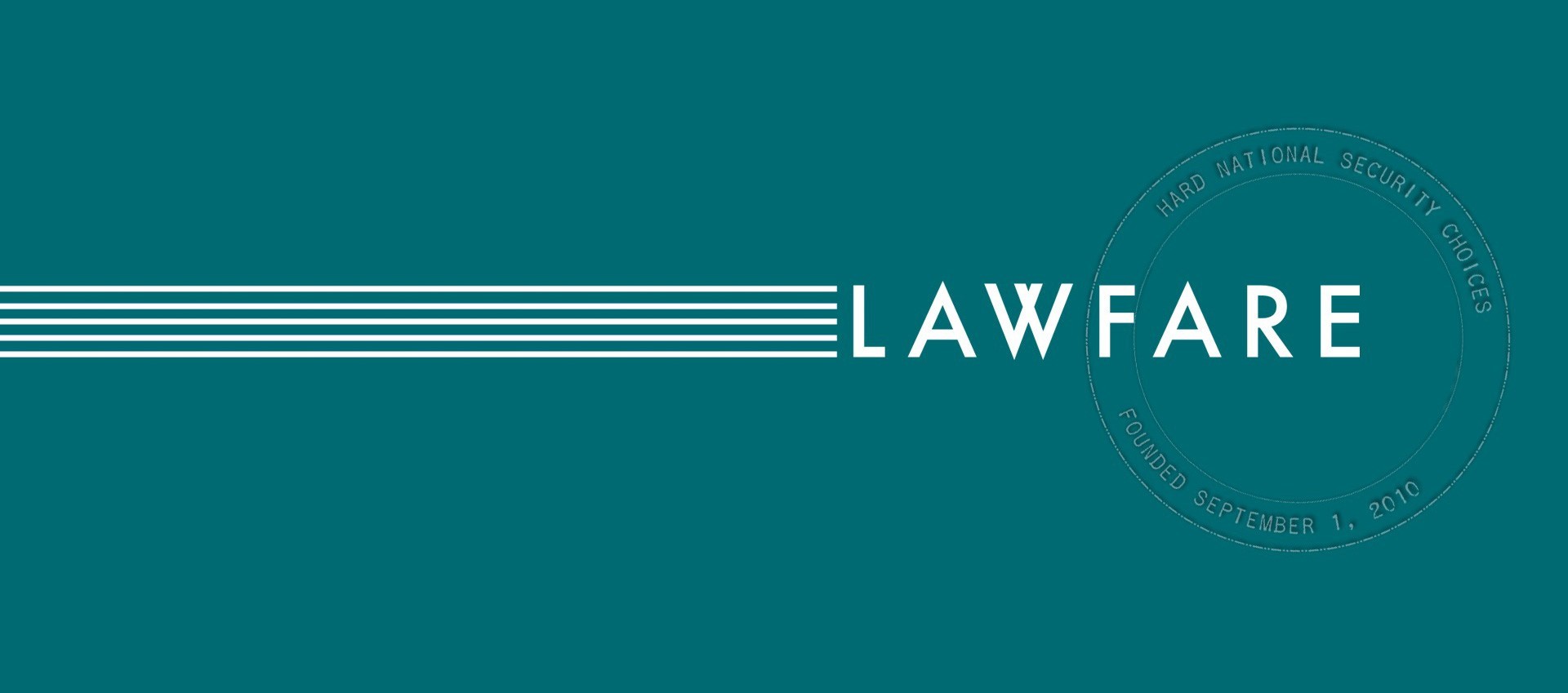Targeted Warfare: Individuating Enemy Responsibility
In an earlier post, here, I described an article I was working on, with my colleague Sam Issacharoff, on detention, targeted killings, and the fundamental transformation we see taking place in the practice, morality, and law concerning the legitimate use of military force.
Published by The Lawfare Institute
in Cooperation With

In an earlier post, here, I described an article I was working on, with my colleague Sam Issacharoff, on detention, targeted killings, and the fundamental transformation we see taking place in the practice, morality, and law concerning the legitimate use of military force. We have now posted the draft of that article, Targeted Warfare: Individuating Enemy Responsibility, on SSRN at this link:
Here is the abstract:
This Article argues that the legitimacy of the use of military force is undergoing a fundamental but insufficiently appreciated moral and legal transformation. The transformation is this: whereas the traditional practices and laws of war defined “the enemy” in terms of categorical, group-based judgments that turned on status – a person was an enemy not because of any specific actions he himself engaged in, but because he was a member of an opposing army – we are now moving to a world that, implicitly or explicitly, requires the individuation of personal responsibility of specific “enemy” persons before the use of military force is justified. Increasingly, the legitimate use of military force is tied to adjudicative-like judgments about the individual acts and roles of specific “enemy” figures; that is the case whether the force involved is military detention or lethal killing. This transformation transcends the conventional debates about whether terrorism should be treated more like war or crime and is more profound in its implications.
This readjustment in the basic premises underlying the justified use of military force will have, and is already having, implications for all the institutions involved in the use of military force and in the processes by which decisions are made to use force. For the military, this change will generate pressures to create internal, adjudicative-like processes to ensure accurate, credible judgments about the individual responsibility of particular “enemy” fighters. For the executive, these changes will propel greater engagement in decisions that had previously been more exclusively within the province of the military itself. For the courts, this transformation toward individuated judgments of responsibility will inevitably bring about a greater judicial role in assessing wartime judgments than in the past, as has begin to occur already. These changes are not yet directly reflected (or at least fully reflected) in the formal laws of war, but we anticipate that as these changes embed themselves in the practices of states, especially dominant states, these changes in practice will also eventually come to be embodied in the legal frameworks that regulate the use of force. This Article, after identifying this fundamental transformation as the central factor driving struggles over the proper boundaries of military force, then explores the ramifications of this change for issues like military detention and targeted killings.
Professor Pildes is the Sudler Family Professor of Constitutional Law and Co-Faculty Director for the Program on Law and Security at NYU School of Law. His scholarship focuses on legal issues concerning the structure of democratic institutions and politics, separation of powers, administrative law, and national-security law. A clerk to Justice Thurgood Marshall at the United States Supreme Court, Professor Pildes has been named a member of the American Academy of Arts and Sciences, a Guggenheim Fellow, and a Carnegie Scholar.




